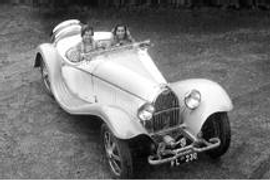BUGATTI Type 55 Models/Series Timeline, Specifications & Photos
First production year: 1932
Engines: Gasoline
Body style: Convertible (spider/spyder, cabrio/cabriolet, drop/open/soft top)
The first car designed by Jean Bugatti became one of the most valuable cars globally, and it introduced several technical improvements as well.
Bugatti was already known for its high-performance cars and the wins on the race tracks. The French brand was at its peak, and Jean Bugatti started to push his father to build a new roadster to replace the Type 43 model, which customers still appreciated. In the end, Ettore Bugatti agreed, and the Type 55 was born and introduced at the 1931 Paris Motor Show.
On the outside, the car sported the horseshoe design for the radiator's grille with the headlights supported by an arched, chromed, horizontal bar along with the EB logo. The supercharger was poking out from the engine bay, just between the radiator and the front axle. Its eight-spoke polished wheels were unusual in a time when other vehicles still featured wired-spokes. A short rear-end served as a trunk in the back, but the retractable canvas-roof couldn't be stored inside it.
There were no doors to enter the small vehicle, but that was not a problem for those times. The two occupants had to sit low in the car in two individual seats separated by the gear-stick. Jean Bugatti installed the dials and gauges in the middle of the dash panel.
Ettore Bugatti was stubborn and didn't want to accept a twin-cam engine, but eventually, he accepted Jean's idea and produced one of the best engines on the market. It was a detuned version of the engine installed on the Type 51 Grand Prix car. Its straight-eight, 2.3-liter, supercharged unit provided 130 hp, which was a huge figure for those times.
